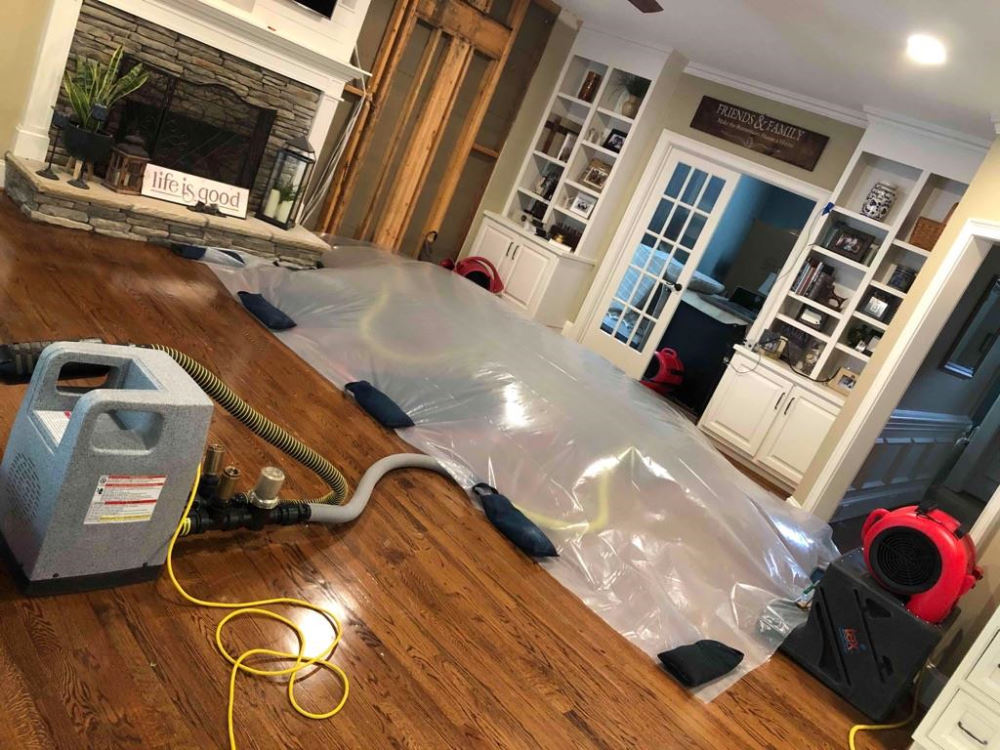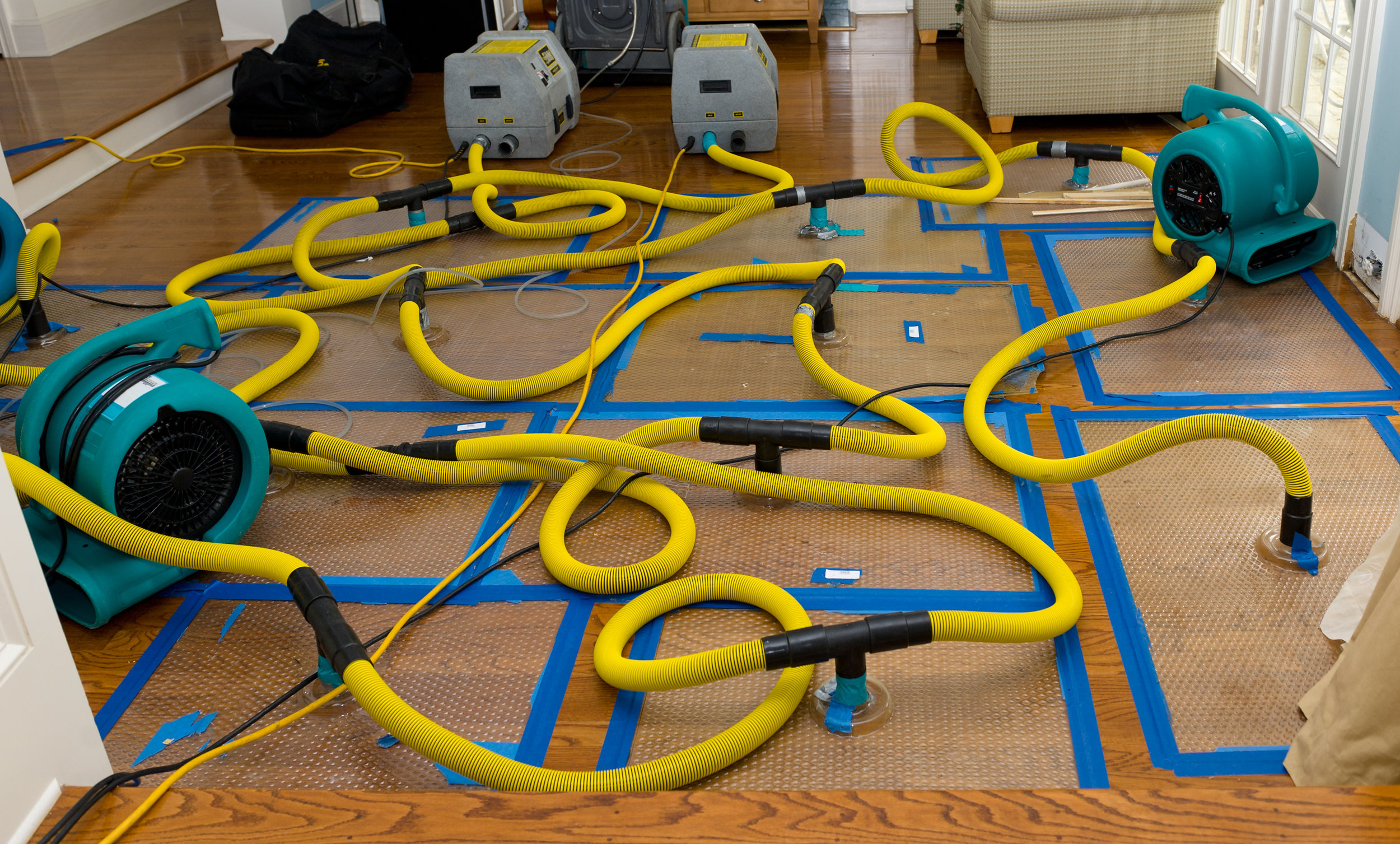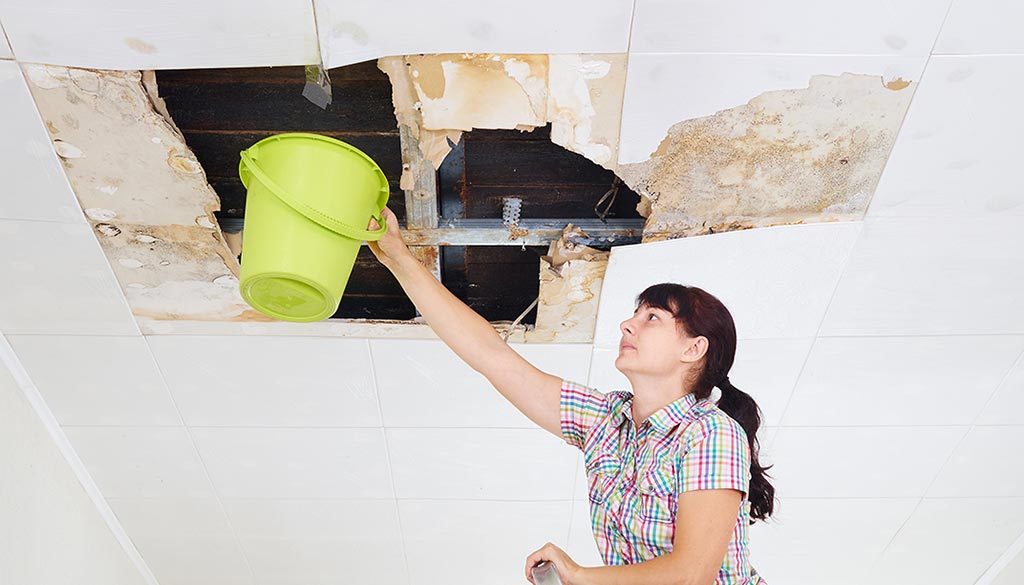Crucial Steps to Comply With for Efficient Water Damage Restoration in your house
When confronted with water damages in your home, understanding the crucial actions for effective reconstruction can make all the difference. You need to analyze the damages and guarantee security prior to dealing with the trouble. Quiting the resource of water is essential, but it's simply the beginning. There's a collection of activities you need to take to secure your residential or commercial property from additional problems when you've taken care of that. Let's discover what you ought to do following.
Evaluate the Damages
When you find water damage in your home, the very first step is to evaluate the damage thoroughly. Begin by identifying the resource of the water intrusion. Look for leakages, ruptured pipes, or various other concerns triggering the trouble. Next, take a look at the affected areas for noticeable signs of damages, consisting of staining, mold, or bending growth. Do not forget to search in hidden spots like behind wall surfaces or under floor covering, as water can leak into these locations unnoticed.Document the damage by taking clear pictures and notes. When talking about the circumstance with your insurance coverage service provider or remediation specialists, this will help you. Take note of the sort of materials influenced, as different products need different reconstruction techniques. Ultimately, evaluate the level of the damage. Is it small or extensive? Comprehending the range will certainly lead you in choosing whether to handle it on your own or hire the professionals for a more comprehensive remediation process.

Ensure Safety
Prior to you start any repair job, ensuring your security is important. Examine the condition of your home. If the water's deep or if you observe electric threats, don't enter the location. Switch off the electrical power and gas supply to stop crashes. Use protective equipment like gloves, masks, and boots to shield on your own from impurities or mold.It's crucial to remain knowledgeable about your surroundings; look for slippery surface areas and sharp things. If the water is from a sewer backup, treat it as dangerous waste. Maintain youngsters and pets away from affected locations to stay clear of exposure.Once you have actually taken these preventative measures, you can wage the repair procedure. Bear in mind, your security comes initially, and if you're ever uncertain, it's best to get in touch with an expert. Taking these steps will certainly assist guarantee you prepare to deal with the repair safely and properly.
Quit the Source of Water
After guaranteeing your security, the following step is to quit the resource of water. Identify where the leakage is coming from. It can be a burst pipe, a malfunctioning device, and even heavy rain entering via a damaged roof. Transform off the primary water supply to your home to stop further flooding if it's a pipes concern. For appliances, unplug them and turn off their water valves.If the source is outside, like rainwater, try to divert it away from your home utilizing sandbags or other barriers. For small leakages, you could be able to use tape or a sealant temporarily up until a professional can repair it. Remember, addressing the source rapidly is necessary to minimizing damages and protecting against mold and mildew growth. When you have actually stopped the water, you'll remain in a better position to carry on to the following actions in the reconstruction procedure.

Eliminate Excess Water
Act quickly to remove excess water, as standing water can lead to a lot more substantial damage and mold growth. Collect your devices: a wet/dry vacuum, pails, and towels. If the water is superficial, you can make use of towels to take in the moisture. For deeper water, a wet/dry vacuum is your best choice. Make certain to empty the vacuum regularly to avoid overflow.If the water is contaminated, like from a sewer backup, use protective equipment, consisting of gloves and masks, to maintain yourself secure. As soon as you've gotten rid of as much water as possible, look for surprise pockets of dampness in edges and under furnishings, as these can nurture mold.Don' t forget to turn off electric devices and power electrical outlets in wet areas to avoid dangers. This initial step is important in minimizing damage and setting the stage for a successful repair procedure.
Dry and Dehumidify the Location
It's vital to completely dry and evaporate the location extensively when you have actually gotten rid of the excess water. Beginning by utilizing dehumidifiers effectively to draw moisture out of the air and stop mold growth. Watch on humidity levels to assure the room dries out completely.
Eliminate Standing Water
To successfully tackle water damage, you require to concentrate on removing standing water as swiftly as feasible. Beginning by collecting required tools, like a wet/dry vacuum cleaner or a pump, depending upon the volume of water. A vacuum should do the technique if the water is shallow. For bigger quantities, a pump is a lot more efficient. While working, make certain to use protective equipment to keep yourself safe from pollutants. As you eliminate the water, take note of concealed locations like under furnishings or in corners where water might gather. Your area will certainly start to dry out when you have actually gotten rid of the bulk. This action is crucial, as sticking around water can lead to mold growth and a lot more comprehensive damage.
Usage Dehumidifiers Properly
How can you properly make use of dehumidifiers to dry and evaporate your area? Beginning by positioning your dehumidifier in the most damaged location, ideally where water damages is most serious. Make certain to close all doors and windows to create a covered atmosphere. Activate the dehumidifier and set it to the proper humidity degree, generally around 30-50%. Empty the water collection tank frequently, or consider utilizing a model with a continuous drain alternative for convenience. When possible, utilize followers to enhance air flow, assisting the dehumidifier job a lot more successfully. Maintain the dehumidifier running up until you're certain that the location is completely dried out, avoiding mold development and added damage (Flood Damage Restoration). This action is important for efficient water damages repair
Monitor Moisture Levels
Tracking humidity degrees is essential throughout the drying out process, as it helps ensure your space continues to be devoid of excess moisture. Buy a trustworthy hygrometer to track moisture properly. Ideally, you desire to maintain levels between 30% and 50%. You might need to change your fans or dehumidifiers to improve airflow if humidity analyses rise above this range. Check the readings frequently, particularly in locations prone to wetness, like cellars or washrooms. If you notice consistent high humidity, take into consideration increasing ventilation or making use of additional dehumidifiers. Remaining on top of these levels not just quickens the drying procedure however additionally avoids mold and mildew development, ensuring your home keeps comfy and risk-free.
Clean and Disinfect Affected Surfaces

Recover and Fix Your Home
After cleansing and disinfecting the influenced areas, it's time to restore and repair your home. Begin by reviewing the damages. Look for architectural issues, like deteriorated walls or floors, and deal with any kind of needed repair services. Replacing damaged drywall or floor covering is essential for both visual appeals and safety.If your furniture or items were affected, consider whether they can be recovered or need substitute. Clean or professionally bring back products where possible.Next, touch and paint walls up any areas that require attention. This not just enhances appearance however likewise secures surface areas from future water damage.Don' t forget to examine your pipes and home appliances for leaks, making sure every little thing's operating appropriately. Take into consideration setting up a dehumidifier to avoid future wetness issues. By taking these actions, you'll recover your home to its former glory and create a much safer living atmosphere.
Often Asked Concerns
For How Long Does Water Damage Repair Typically Take?
Water damages remediation commonly takes anywhere from a couple of days to several weeks, depending upon the degree of the damage (Smoke Damage Restoration). You'll intend to analyze the circumstance swiftly to decrease more issues and assure proper reconstruction
Will My Insurance Coverage Cover Water Damages Remediation Prices?
Your insurance may cover water damage restoration prices, but it depends on your plan. Examine your insurance coverage information and contact your insurance representative to clarify what's included and what you need to submit an insurance claim.
Can I Manage Water Damage Repair Myself?
You can handle water damage remediation on your own, however it's crucial to evaluate the scenario initially. If it's considerable, you might wish to call experts. Constantly prioritize safety and assure you've obtained the right devices.
What Are the Indicators of Hidden Water Damage?
You might discover signs of surprise water damage like warped walls, moldy smells, or discoloration. If your floors really feel mushy or you area mold, it's time to explore better before the scenario aggravates.
Just How Can I Avoid Future Water Damage in My Home?
To stop future water damages in your house, you ought to routinely examine pipes, seal cracks, keep rain gutters, and warranty correct drainage. Mounting a sump pump and dampness obstacles can likewise help keep your area dry. When you uncover water damage in your home, the very first action is to assess the damages extensively. Act rapidly to eliminate excess water, as standing water can lead to a lot more considerable damages and mold growth. To properly take on water damages, you need to focus on removing standing water as quickly as possible. As you eliminate the water, pay attention to concealed locations like under furniture or in edges where water could gather. Water damages restoration generally takes anywhere from a few days to numerous weeks, depending on the degree of the damage.